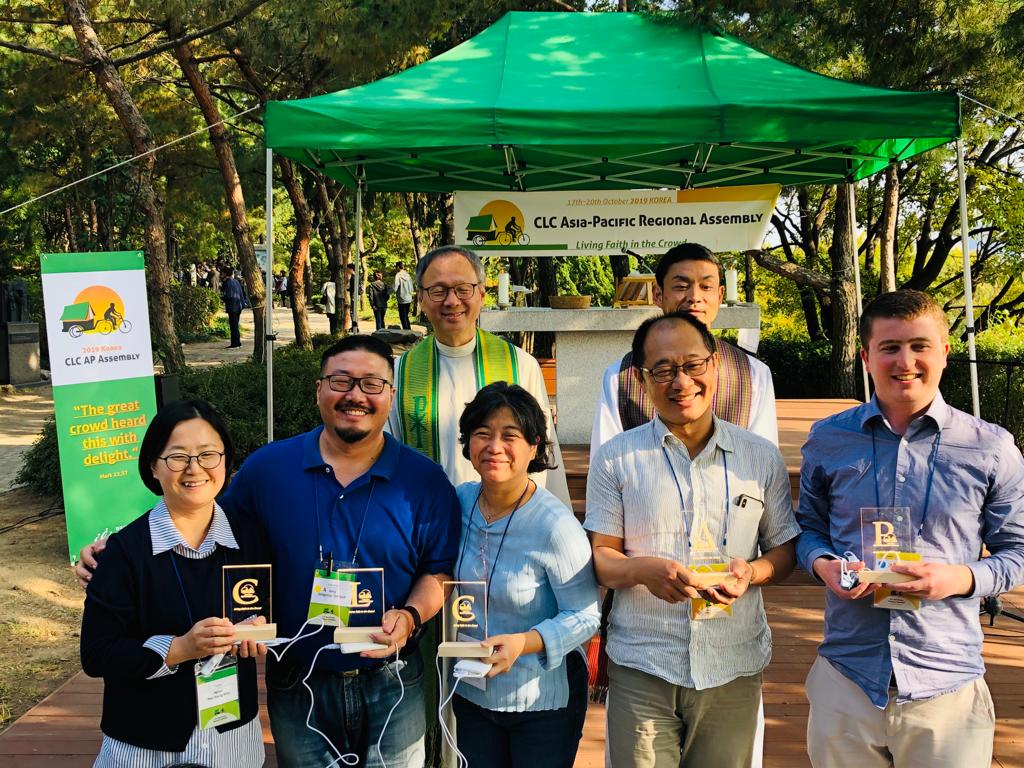The “Prayerful and Eucharistic” Discernment and Writing Group (DWG) formed a small church together for six months of prayer, Eucharist, and discernment in person and on Zoom. We had an age group from 30s to 81, with the majority 30, 40, 50, 60…then 75 and 81. We were two bishops, two priests, two religious women and seven lay people. We had four and then three women. We had every decade represented, over pre-Vatican 2 to post-Vatican 2 church and we had all come from diverse experiences of belonging to that church. We took with us our background, our engagement with church, and what manner we had that engagement within parish, profession and vocation. We were committed people of faith as church architect, school educator, academic, scripture scholar, retreat master, church publications officer, church historian, youth minister, parish pastoral associate, professional nurse, Cathedral liturgist, lay, priest, religious and bishop. So we had quite a large experience of belonging to the Church within a group of 13. We represented a cross-section of where God’s people were at in being church, and the reality of Australia. We were faithful to each other in respecting that each of us were discerning where we were coming from.
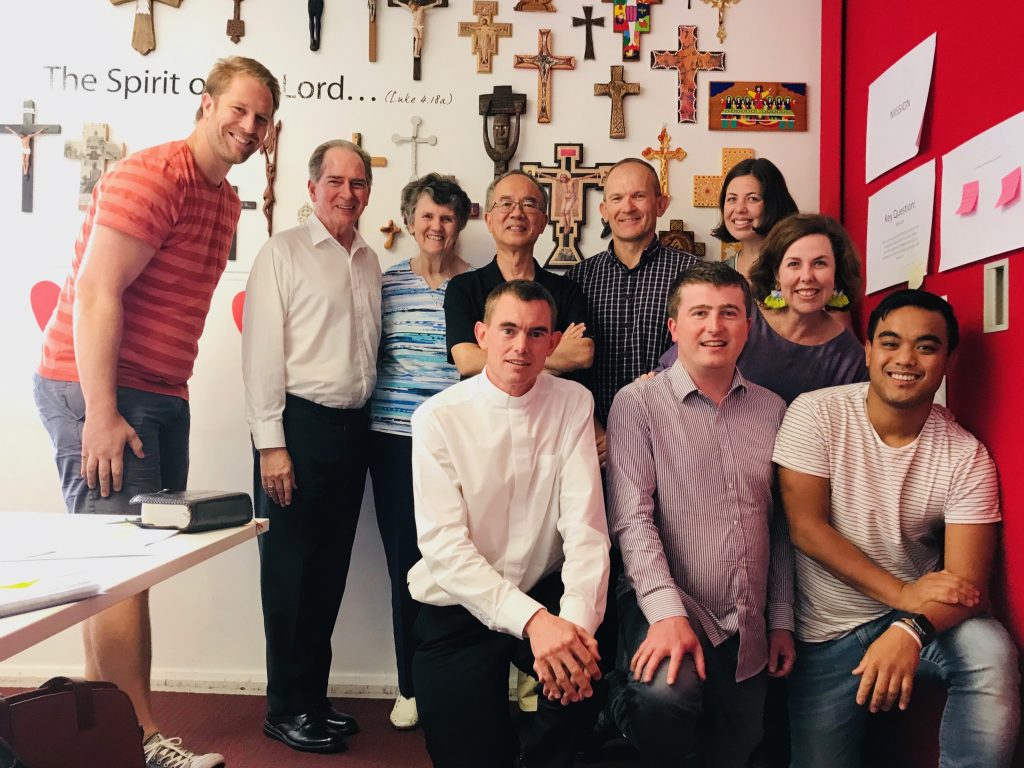
A Pentecost experience
The experience was all-consuming and constant. Our induction was in late October 2019. We soon were mourning the sickness and then death of our first chair, Perth scripture scholar Sr Clare Sciesinski PBVM. Gathering in her memory over Zoom, God’s Spirit moved among us like the disciples in that Pentecost room. That prayer evening brought us together and revived our faith in God’s presence and action within our group.
We prayed the Plenary Council prayer fervently: “Come Holy Spirit of Pentecost, Come Holy Spirit of the Great South Land”. And true enough, God’s Spirit was poured out on us and we were given language for our sorrow and words for our work.
1. The grace and challenge of communal discernment
“Please note: the discernment papers are the fruits of communal discernment, which does not necessarily reflect the individual perspectives of each of the group members. The Plenary Council team sincerely thanks all contributors.” This small note on page two of the paper acknowledges that all our process and writing came about because of “communal discernment”. Our Church has only begun to learn how to do this. As a Discernment and Writing Group, we struggled to know how to grow together into our discernment and then see how it impacted our writing.
It was a very difficult process, one which had never been attempted before. We were grappling with the unredeemed parts of the Church, those areas where we have not let Christ’s love transform us. The voices in our DWG were somewhat representative of the voices of many people among the people of God in phases One and Two of grassroots participation. Thankfully, the discussion never stooped into recriminations. Yes, people spoke out of their experience, theology and tradition. Differences of opinion within our group and in the grassroots data were there, named and expressed. In bringing these into the light, the Holy Spirit could move among us.
Our communal discernment, then, involved bringing seemingly incompatible positions together, with something new emerging that everyone could hold to. We couldn’t grasp onto our own opinion too strongly in this process. It wasn’t majority rules as in a parliamentary democracy. It was a process of calling on God’s Holy Spirit for help with discerning, writing and editing the paper.
The paper names Communal Discernment as one of the major fruits of the Plenary Council already:
“For many within the Church, the Plenary Council ‘communal discernment’ has been a new and graced experience. By its very nature, communal discernment can build community. This important practice needs leadership and training, however, for many among the faithful are unfamiliar with its aspects of basic listening, depth of prayer, time and letting go of attachment to one’s own opinion.”
The Prayerful and Eucharistic paper
The Church in Australia was encouraged to bring together lay leaders and clergy for training in communal discernment, affirming this path as a “privileged way of making important decisions” which affect the body of the Church. This way of being church builds conversation, community and attentive commitment to the movement and action of God’s Spirit.
2. Four desires in phase one leading to four major challenges. A golden thread in the structure of the paper.
The discernment question for our Discernment and Writing Group was: How is God calling us to be a Christ-centred Church in Australia that is Prayerful and Eucharistic? The first part of the paper makes sense of the Listening and Dialogue responses from the People of God, 222000 peoples’ voices and 18000 submissions, sometimes called ‘Phase One’. These responses “revealed the deep faith, integrity and sincerity of all the people who gave of themselves in their offerings”.
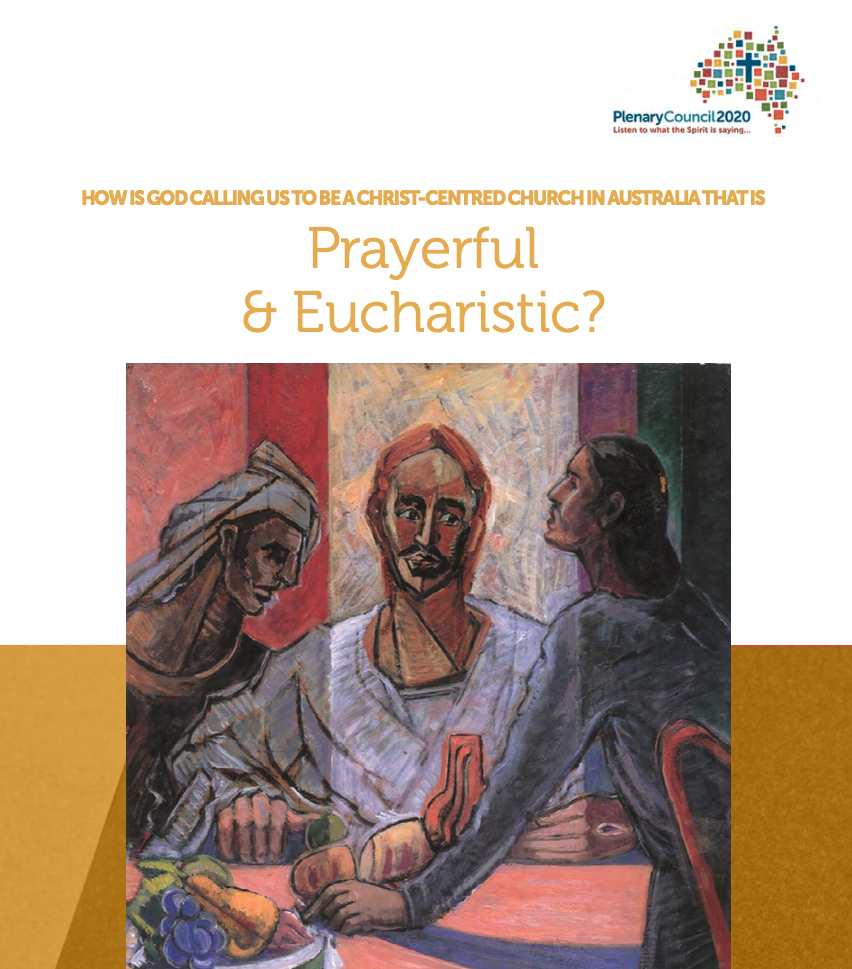
In Phase One, God had brought forth four key desires among the People of God for discernment within the paper:
- Desire 1: to be invited and empowered to “full, conscious and active participation” – which was later named as participation
- Desire 2: to meet God in daily life and so experience encouragement through appropriate faith formation
- Desire 3: to nurture the communal aspect of our life together – which was later named as community
- Desire 4: to nourish, accompany, give witness, support, invite, welcome, engage and be present to others – which was later named as mission.
In seeking to be faithful to the people’s offerings, the Discernment and Writing Group explored these four desires as four Major Challenges: community; participation; formation; and mission – which then became four areas for Prioritised Questions and Proposals for Change.
3. A changing pastoral reality
The Pastoral Reality part of the document aimed to take a snapshot of the social and communal context of the Church in Australia pre-COVID19. In so doing, it names the decline of trust in church leaders. It acknowledged that parish sacramental and communal life was on the periphery of the lives of the majority of those who made contact with the Catholic community. The paper states that “In 2016, approximately 12% of all Catholics were regularly participating in the celebration of the Eucharist.” Overall those who do participate at Eucharist have “a strong desire not to be merely spectators, but active participants”.
4. A Church that is open to change
A conversion moment for me occurred around one simple phrase which made its way into the Theological Vision statement. The phrase is: “A Church that is open to change”. The Pastoral Reality section had made clear the ways our Church is marked by change. But now, in the Theological Vision the paper claims that we are a Church that is open to change. A Church that is open to change is one which encourages all of us to be centred on what matters most while being bold in embracing God’s call for today.
This heralds a new path for being church – an exciting opening. This movement itself is significant for the Plenary Council. The Council is built on the grassroots prayer and thinking of God’s people. Professor Ormond Rush has described this as a “reverse pyramid”, where God speaks words of renewal and grace through God’s people, and what we hear transforms our Church, its ways and structures. All Plenary Council consultations relied on a deep trust and prayerful discernment of what the Spirit was saying.
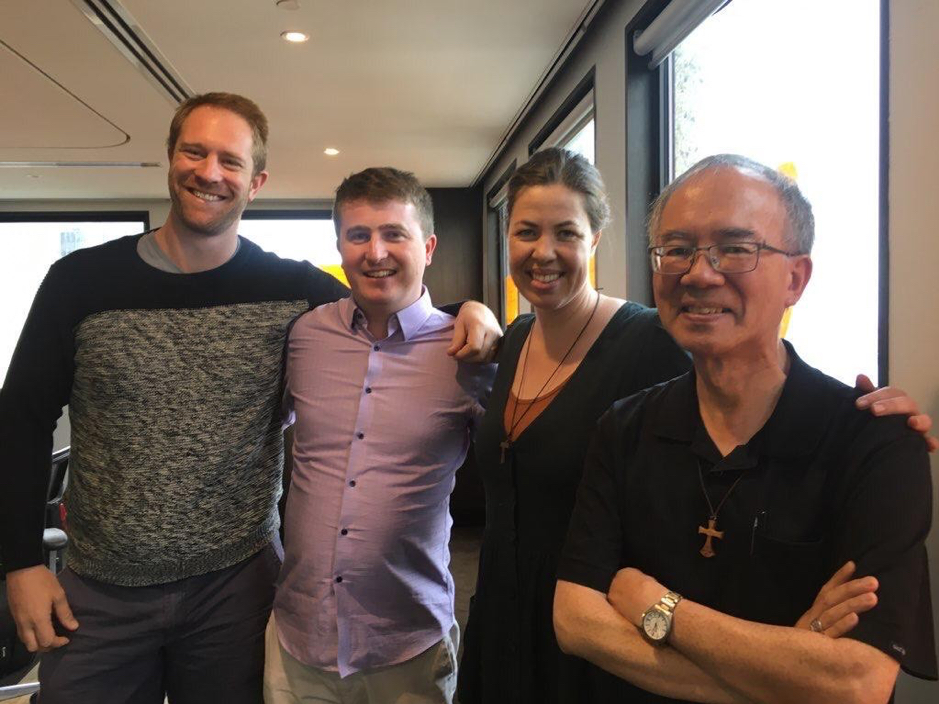
5. Encouraged by the Emmaus encounter
The Emmaus encounter (Luke 24:13-35) forms the heart of the paper’s Theological Vision. The text offers much encouragement and insight into the encounter with God which is at the heart of us being Prayerful and Eucharistic. The Risen Lord meets the disciples in their sadness, disillusionment and discouragement. Jesus walks with them, hears them out, breaks open the scriptures, and joins them at table. “It is when Jesus took bread, said the blessing, broke it and gave it to the disciples that they recognise him”. The disciples were able to go on to the communal gathering in Jerusalem with joy and hope, their faith rekindled.
6. Four thematic areas of challenge, questions and proposals for change
The four sections outlined in the Major Challenges section provided a response to the four desires which came through in Phase One consultations. They also delivered four areas for discernment and four frames for Prioritised Questions and Proposals for Change for a Prayerful and Eucharistic Church: community, participation, formation and mission. The paper did not look with ecumenical glasses, and there is a strong focus on the Roman Rite. It is worth considering how the paper may have been different if we were writing during the pandemic.
A. Community – how can we develop as a Prayerful and Eucharistic community that is united in Christ while valuing and celebrating diverse spiritualities, customs and authentic liturgical practice?
In the Response to Phase One Listening and Dialogue, the paper noted that “there is a yearning among God’s people to nurture the communal aspect of our life” as the Church in Australia. In reimagining how we can develop as a Prayerful and Eucharistic community, the paper took inspiration from the example of the early church. Small and intimate communities made a great impact on the people of the first centuries of church life. Inspired by this example, the Church in Australia can reimagine the model of parish and connected communities, prioritising “the creation of small communities of faith and life”.
The paper proposed that the Church in Australia implement collaborative decision making and communal discernment as an ongoing way of proceeding. The paper also proposed easing the limitations on local bishops being able to permit communal celebrations of the third rite of the Sacrament of Penance – a restorative sacramental liturgy for the whole community. These proposals would allow the Church in Australia to become more and more a Prayerful and Eucharistic community “one body, one Spirit in Christ” (Ephesians 4:4),
B. Participation – how can we best encourage full, conscious and active participation in the liturgical and prayerful life of the Church community?
One of the key desires emerging among God’s people through the Listening and Dialogue phase was that they would enjoy the “full, conscious and active participation” in liturgical celebrations which the Vatican 2 Constitution on the Sacred Liturgy declared as their right and duty.
The paper lamented that this “full, conscious and active participation” is not always evident in the sacramental and daily life of the church. Like Jacob wrestling with the angel, the paper tussled with this phrase and its implications. It meditated on the fact that at baptism we are proclaimed “priest, prophet and king”. The paper noted that “the prayers at Eucharist are translated in a style that many feel excludes them from engaging”. It then considered the “priesthood of the baptised laity” and argued such priesthood is not promoted well in church life. This meant that Eucharistic celebrations were diminished as we were not drawing out all the gifts of the faithful, gifts given by the Holy Spirit.
The Proposals for Change were tangible ways “full, conscious and active participation” could be imagined for our time. A review of the translation of the Missal and a revision of the Lectionary would make the prayers and readings at Mass more accessible. Commissioning lay women and men to exercise their leadership more frequently in our sacramental life would enrich the Church. Drawing forth the ministry, experience and insight of lay people, however, requires being open to “the Spirit’s boldness, to trust in, and concretely to permit, the growth of a specific ecclesial culture that is distinctively lay” (Pope Francis, Querida Amazonia, 94).
C. Formation – How do we walk together as a pilgrim church that effectively accompanies, ministers to and forms people, in light of secular and religious practice, as a community of Christ’s disciples?
In contemplating the desire of God’s people for formation, the Church in Australia ought to remember Luke’s Gospel when the disciples ask Jesus “Lord, teach us to pray” (Luke 11:1). Jesus’ response is the Our Father. The paper affirms that God’s people seek formation in faith, prayer, and discernment so as to “flourish in faith and grow into our full stature” as disciples. The paper affirms that formation is best when God shapes lay and ordained together.
The paper proposes renewing the sacramental life of the church by reviewing the steps for inclusion in the Catholic community and developing new liturgical and prayerful experiences which meet transition moments in peoples’ lives. There are proposals for an online hub which would encourage prayer in the Church through theologically-sound video and audio prayer resources. The paper encouraged dioceses to prepare programs to form people in prayer and discernment. There was a need for national and local formation opportunities of spiritual formation for young people, couples, liturgical musicians, and alumni of Catholic schools. There was encouragement for the Plenary Council to consider how we may form priests and lay people together. These Proposals for Change attempt to revitalise our pilgrim church and pave the way for mission.
D. Mission – How can our practice of being prayerful and Eucharistic draw us and others to Christ?
In surveying mission for a Church that is Prayerful and Eucharistic, the paper draws inspiration from the conclusion to Mark’s Gospel. Jesus calls us to “go out into all the world and proclaim the good news to the whole creation” (Mark 16:15). Mission in daily life calls us to hands-on commitments. Christ calls us to love the poor, build justice and care for creation. Following Pope Francis, the Church needs to open wide the doors of its life to people.
The Proposals for Change sought to build encouragement for people: through the dismissal rite, and through invitations to God’s people to discern commitments to concrete ministries of service, justice and ecology. The paper affirms the development and implementing of strategies to relate with people alienated from our Catholic community by disillusionment, injury and isolation. These Proposals for Change sought to ensure that we become a people who reconcile with rivals and hear the cries of the earth and the poor, ever mindful of welcoming and including the isolated.
Conclusion
All told, our Discernment and Writing Group prepared a paper for the good of the people of God as the Church in Australia. We experienced an outpouring of the Holy Spirit as at Pentecost. We were sent out from the upper room as companions, graced with new words of encouragement and hope.
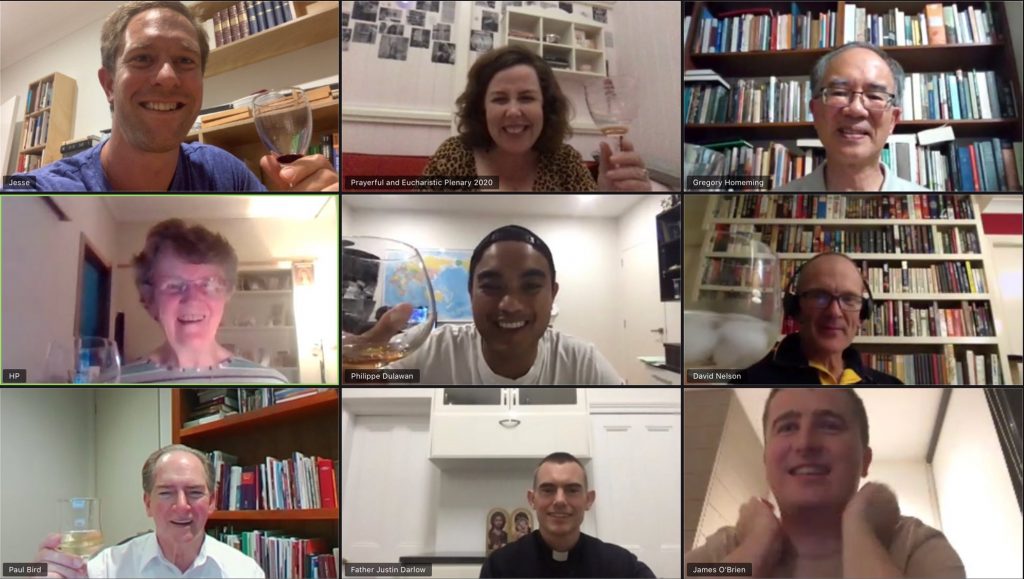
“Now to him who by the power at work within us is able to accomplish abundantly far more than all we can ask or imagine, to him be glory in the church and in Christ Jesus to all generations, forever and ever. Amen.”
Ephesians 3:20-21
You may read the paper at https://plenarycouncil.catholic.org.au/wp-content/uploads/2020/05/PC2020-thematic-papers-3.pdf
By James O’Brien, member of the Prayerful and Eucharistic group from October 2019 – April 2020.
1 Comment
